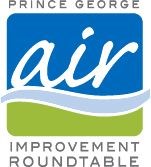The city's air quality has improved significantly but there is more work to be done, city council was told Monday night.
Representatives from the Prince George Air Improvement Roundtable highlighted findings from a group of researchers at the University of Northern British Columbia during a presentation.
They found a 40-per-cent reduction in particulate matter between 2012 and 2016 and attributed the drop to major government-aided investments in technology by the city's pulp mills.
But road dust and so-called "non-permitted" emitters remain areas in need of improvement.
"There's a lot of work to be done, still, on the home-heating side and on the transportation side," PGAIR executive director Terry Robert said.
The impacts of wildfire on the numbers being produced also need to be considered, he added.
"It really does have an impact on our annual averages and so all of us communities across the Central Interior are struggling with the same goal, the concept of how do we integrate this into the future community goals," Robert said.
Getting out word that the city's air is much better than it has been is also a goal, Coun. Garth Frizzell added.
He said an internet search of "air quality in B.C." led him to the provincial government's environmental sustainability page, where air quality indices showed Prince George scoring better than Metro Vancouver and North Okanagan.
But when he clicked on a link to more information, Frizzell said he ended up on a report showing Prince George as the "worst, an outlier, the terrible one." But it is based on 2002 to 2006 data, Frizzell noted.
"That's the live link today and I think that's something that needs to be fixed right away," he said. "It's inaccurate, it's misleading and if somebody was basing their decisions on where to live on a Google that says 'air quality in B.C.,' they've be basing it on some old data."



